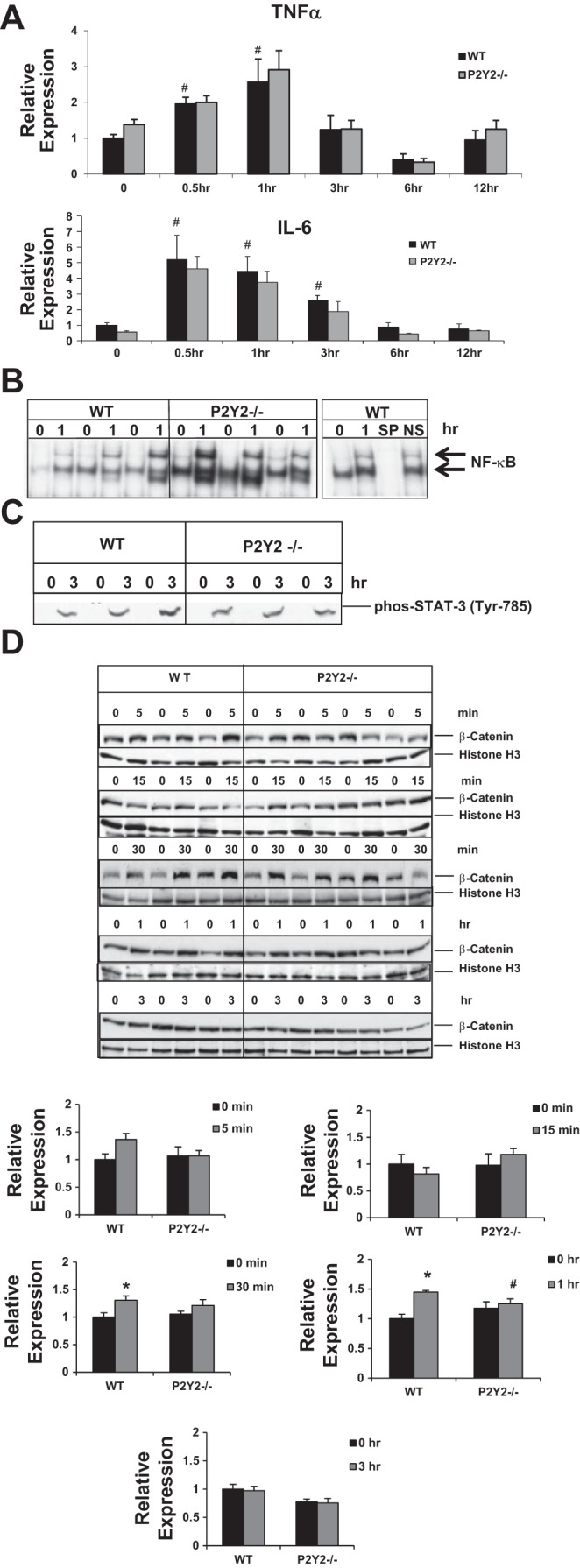Fig. 5.

Comparable early induction of cytokines and cytokine-mediated signaling in WT and P2Y2−/− mice in response to 70% PH. WT and P2Y2−/− mice were subjected to 70% PH and the resected lobes (0 h), and remnant livers harvested at 0.5 to 12 h post-PH were analyzed by qRT-PCR (A) for the induction of cytokines (IL-6, TNF-α). Bar diagrams represent fold induction with reference to respective resected lobes (0 h); n = WT: 20, KO: 20 (0 h); WT: 4, KO: 4 (0.5 h); WT: 4, KO: 4 (1 h); WT: 4, KO: 4 (3 h); WT: 4, KO: 4 (6 h); WT: 4, KO: 4 (12 h). B: nuclear protein extracts isolated from the resected lobes (0 h) and remnant livers (1 h) of each animal were analyzed by EMSA for DNA binding activity with radiolabeled double-stranded oligonucleotides containing NF-κB consensus binding sites. Specificity of NF-κB DNA binding activity was determined by cold competition assay with 100-fold excess of cold specific and nonspecific oligonucleotides in the incubation mixture; n = WT: 3, KO: 3. C: total protein extracts were isolated from the resected lobes (0 h) and remnant livers (3 h) of each animal were analyzed by Western blotting for STAT-3 phosphorylation (Tyr-785), marker for the activation of IL-6-mediated activation of JAK-STAT signaling pathway. Data represent means ± SE; n = WT: 3, KO: 3. #P < 0.05 vs. Control (0 h); not significant between the WT and P2Y2−/−. D: nuclear proteins extracted from the respective resected lobes (0 min) and the remnant livers of each animal harvested at 5 min, 15 min, 30 min, 1 h, or 3 h were analyzed by Western blotting for β-catenin. Histone H3, protein loading control. Relative expression was calculated based on densitometric analysis of band intensities, with reference to WT (0 min); n = WT: 3, KO: 4 for each time point tested. Data represent means ± SE; *P < 0.05 vs. WT Control (0 h), #P < 0.05 vs. WT (1 h).
